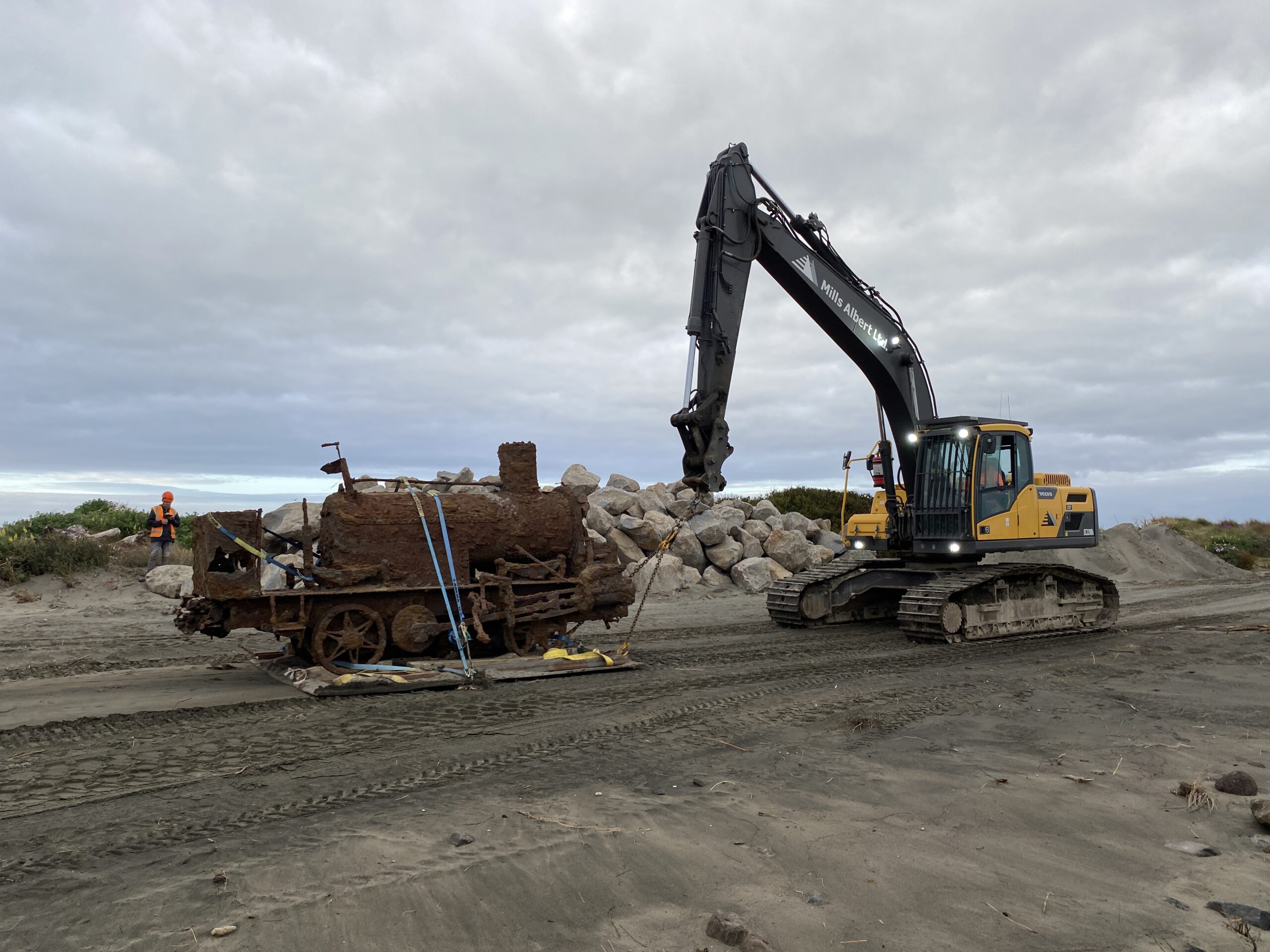Skunk lifted from South Mole site as restoration progresses


Skunk the locomotive has been unearthed and safely lifted from the sand dunes at the South Mole, where Te Pūwaha: the Whanganui Port revitalisation project is restoring over 700 metres of river structures, including the Tanea Groyne, sections of the interface wall along the South Spit, and the initial sections of the South Mole.
Restoring these structures will protect the end of the South Spit, help to maintain the course of the Whanganui River, reduce wave energy, and support the flushing of silt out to sea.
Skunk was discovered by Mills-Albert Limited site supervisor Brendon Gabbott during excavation works in early September. Believed to date back to the late 1800s, Skunk once hauled rock and materials to build the original South Mole and is thought to have been left behind after its completion in the early 1900s.
Site kaihautū Kahurangi Simon says the recovery of Skunk shows what can be achieved through collaboration.
“Our contractors have worked closely with project partners and SteamRail Whanganui to ensure this important piece of history could be lifted and removed as carefully as possible.”
“It’s taken time to come up with a suitable solution to lifting Skunk out of the dune and then transporting it almost three kilometres along the beach with as little damage as possible. Hats off to the team at Mills-Albert in particular, as they have shown considerable care throughout this process.”
The operation involved excavating and manually exposing the locomotive before installing lifting bars beneath its chassis. Two excavators then raised Skunk onto a prefabricated steel cradle supplied by SteamRail Whanganui, before it was transported to the South Beach carpark and lifted by HIAB to SteamRail’s yard for assessment.
Blair Jordan of SteamRail Whanganui says the group will now assess Skunk’s condition and explore whether restoration is possible.
“We took the points lever back to our yard last month and, after a lot of gentle chipping and wire brushing, it has come up really well. Despite being buried in sand all these years, the handle still moves to about two thirds of its throw, so we’re fairly confident we can get it operating again.”
“We’re absolutely fizzing about taking care of Skunk but now the hard work begins, as we source funding for the restoration and come up with a plan.”
Dr Jon Roygard, Horizons Regional Council group manager for catchment operations, says the South Mole restoration project remains on track to complete this first phase of works by the end of the year.
“The South Mole is a challenging environment for our contractors. It is relatively difficult to access, the team have to contend with the tide, and, as always, the weather plays a big part. However, works have progressed really well and we’re pleased where things are at.
“As this portion of the project is coming to a close, we are awaiting decision from central government around potential funding for further works as part of the Te Pūwaha project.
“We’re also looking forward to sharing the work achieved to date at our South Mole Community Day next month. It is a free family-friendly event and all are welcome.”
Members of the public can learn more about the South Mole restoration and the wider Te Pūwaha project on Saturday 1 November, from 11.00 am – 2.30 pm at South Beach. Throughout the day, 4WD tours will take groups out to the South Mole, big machines will be on show, and there will be a free sausage sizzle. Visit eventfinda.co.nz/2025/te-puwaha-south-mole-works-community-event/whanganui for details.


